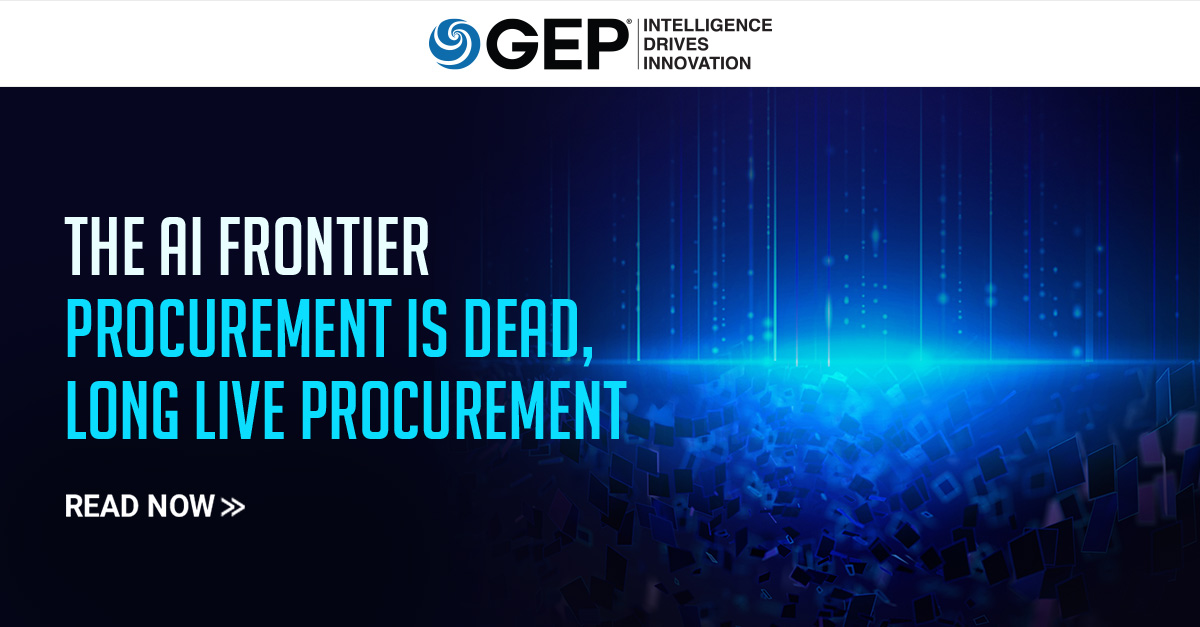
5 Real-World Use Cases for AI in Procurement
- AI is moving procurement from hype to real-world efficiency across sourcing, suppliers, agreements, risks, transactions.
- Generative AI automatically creates documents like scorecards, contract briefings, RFP responses to assist workflows.
- Predictive procurement via AI optimizes demand forecasts, provides early supplier risk warnings, and recommends negotiation strategies.
November 30, 2023 | Procurement Software
Artificial intelligence (AI) is transitioning from hype into a real-world tool driving efficiency and insights across procurement.
AI is transforming how enterprises source materials, manage suppliers, negotiate agreements, mitigate risks, process transactions, and benchmark performance.
The results include lower costs, improved cycle times, and less maverick buying across complex global supply chains.
But for many leaders, understanding where exactly AI can be pragmatically applied remains a mystery.
Let’s explore the highest potential use cases emerging for AI-powered procurement.
Automating Core Procurement Processes
Mundane yet critical tasks plague procurement operations. AI excels at relieving teams from repetitive manual work to focus on value-add activities. Four prime examples include:
1. Predictive Demand Forecasting
2. Automated Contract Analysis
3. Anomaly Detection in Invoices & Payments
4. Supplier Risk Assessment
5. Purchase Pattern Analysis
Generative AI, the emerging subfield of AI, automates the creation of written content to match human quality prose. For procurement, generative AI can instantly produce essential documents like:
• Supplier Scorecards
Algorithmically evaluating performance across pricing, delivery, quality, and sustainability metrics to generate supplier scorecard writeups highlighting areas for improvement. This provides consistent evaluations that can be customized for each vendor.
• Contract Briefings
Reviewing agreements and flagging important clauses, risks, or milestones then compiling summary documents for legal and business review. This easily identifies key considerations.
• RFP Responses
Using a request for proposal (RFP) as the input, generative AI can draft comprehensive responses aligning services, pricing, and timeline details to the requirements and format expected by procurement departments. This kickstarts the RFP response process.
Enabling Predictive Procurement
As algorithms grow more sophisticated thanks to datasets and computing scale, procurement AI expands from reactive to predictive:
• Demand Forecast Optimization
Continually tuning demand models based on new signals like weather, geopolitical developments, commodities volatility, and supply chain events for precision unlike static human estimates. This minimizes disconnects.
• Early Supplier Risk Warnings
Scraping transactions, shipping data, credit reports, news, and public records to uncover signals weeks or months before financial, operational, or reputational supplier risks materialize. Risk plans activate early.
• Contract Recommendation Systems
Analyzing vast historical data on contractual terms and corresponding business outcomes, AI recommends nuanced approaches for upcoming negotiations, renewals, or RFP criteria to maximize value. This elevates procurement strategy.
Intelligent Procurement
Business leaders ultimately envision end-to-end autonomous procurement systems powered by AI, RPA, and advanced analytics. Human leaders set objectives and constraints while algorithms execute source-to-pay processes optimized for cost, risk, and sustainability across global supply ecosystems.
As AI algorithms grow exponentially more powerful thanks to accelerating data and cloud computing scale, nascent use cases such as real-time supplier intelligence, predictive risk management, and automated document generation will soon unfold.
Learn more about GEP’s AI-first approach to procurement.




